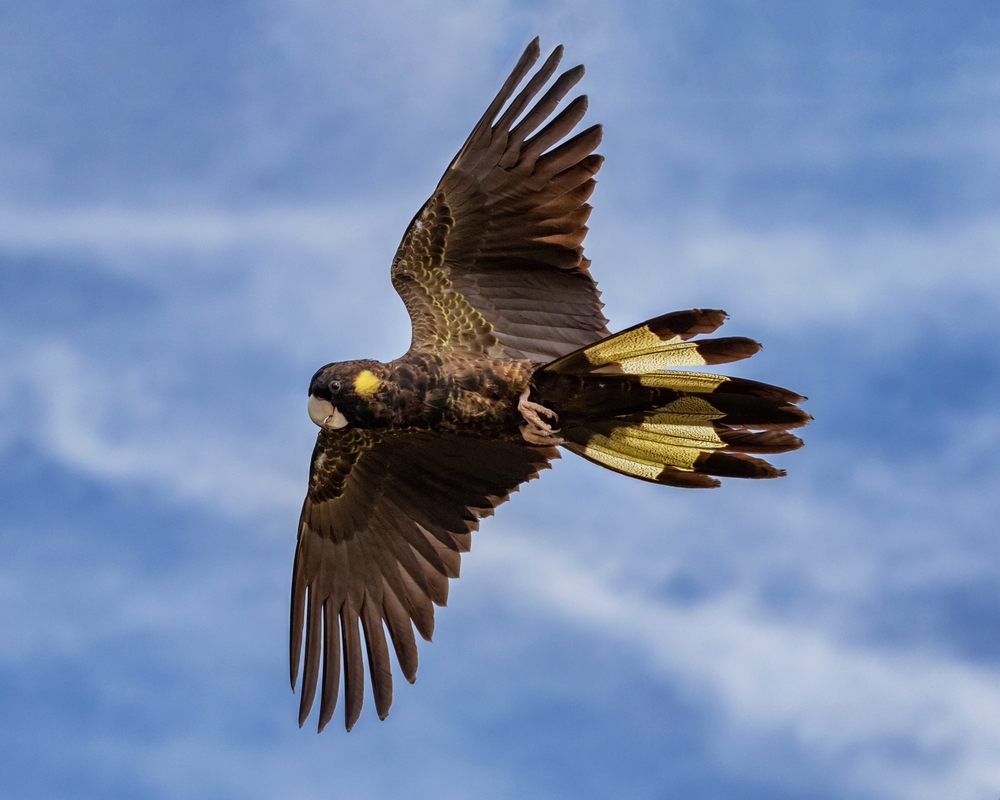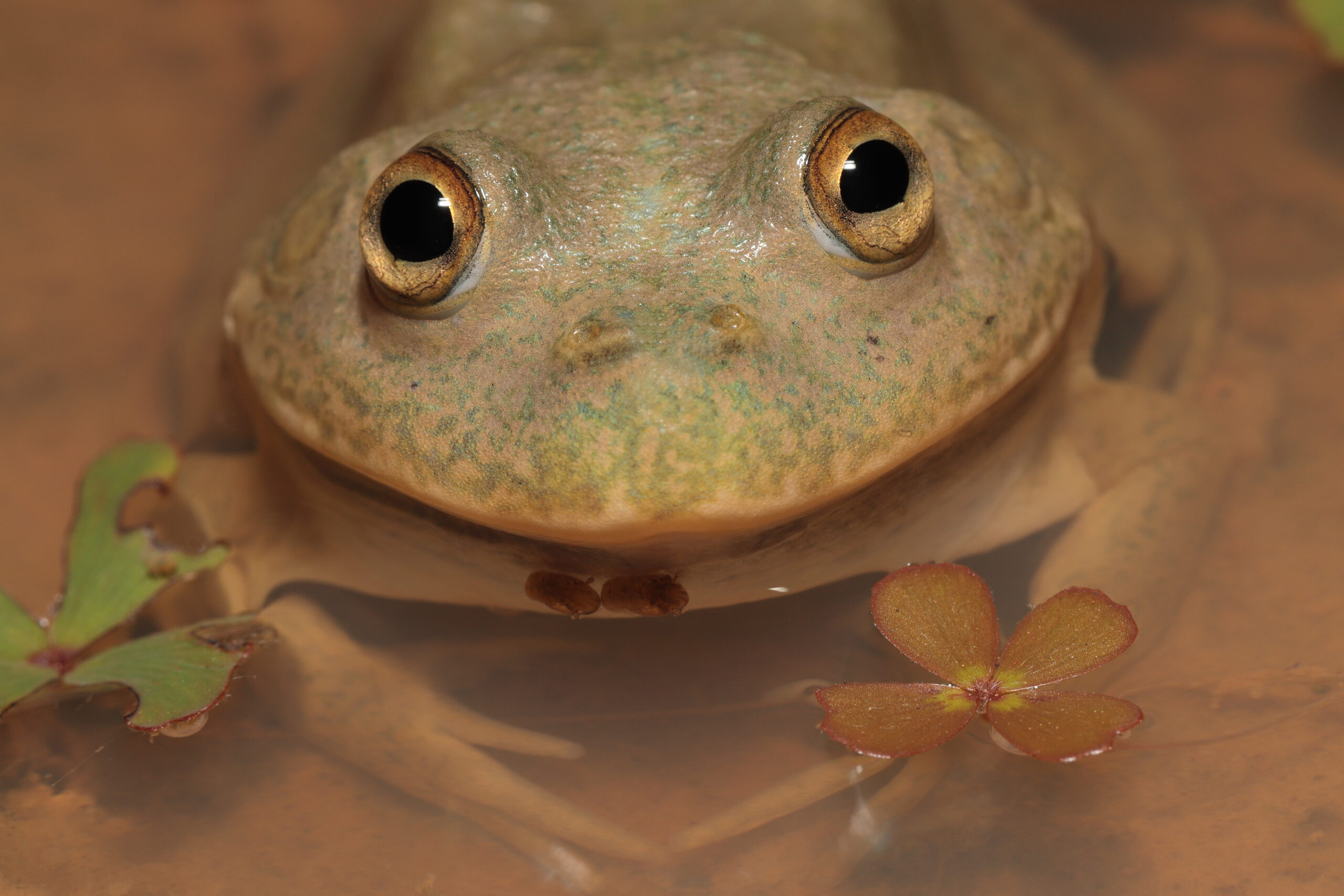| Common name | Red-eyed tree frog |
| Scientific name | Litoria chloris |
| Type | Amphibian |
| Diet | Tiny insects and moths |
| Average lifespan | 5 years in the wild, and up to 16 years in captivity |
| Size | 6.5cm in length |
There’s no missing this striking amphibian, with its big bulging eyes that have an alien-like quality. The red-eyed green tree frog (Litoria chloris) is one of the most recognised and universally-loved frogs, regularly gracing the cover of nature magazines, and covering souvenir merchandise. But this amphibian’s spectacularly coloured orangey-red eyes are not its only drawcard, with the frog also valued for the antibacterial properties of its skin.
Reaching up to 6.5cm long, this tree frog is considered a large amphibian, with a bright green back and yellow belly. Most of the red-eyed tree frog’s limbs are yellow, with only the upper forearms and tibia the same vibrant green as the frog’s body. The litoria chloris is characterised by the distinct deep purple to brown of its thighs and bright red-orange iris that has a black horizontal pupil.
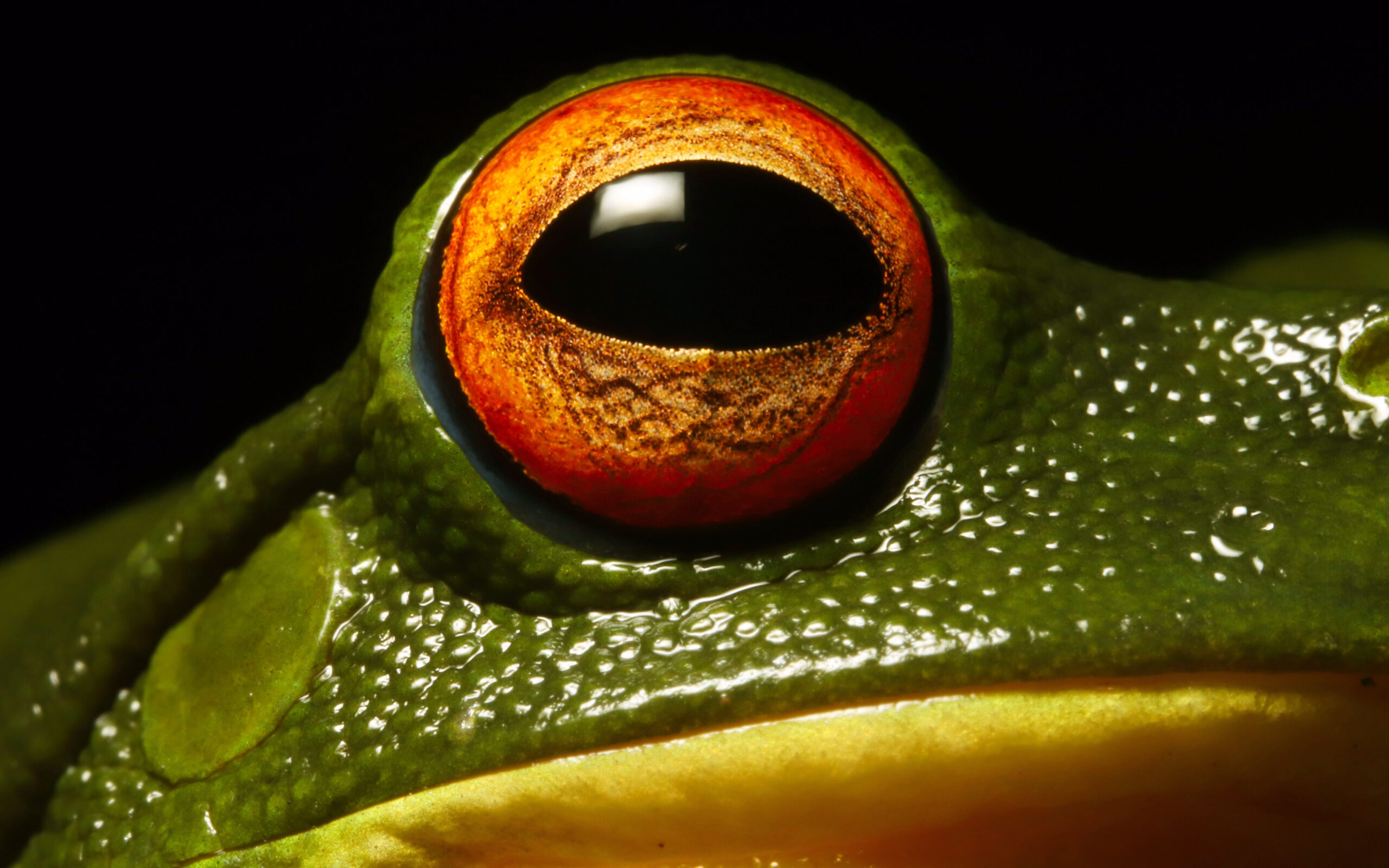
The red-eyed tree frog makes its home within tropical lowland and montane forest with continual forest cover and access to water in the form of rivers or ponds a must for their continual reproductive success. These frogs have also been recorded in areas of flooded grasslands, and in re-growth areas. Within Australia, the red-eyed tree frog is found from as high as Mackay in Queensland, and down along the coastal areas towards Gosford in NSW.
A nocturnal species, these bright green amphibians spend much of their time high in the tree foliage and are seen less often than their close relative, the green tree frog, Litoria caerulea. Although it might be hard to steal a glimpse of the red-eyed green tree frog, the amphibian makes itself known thanks to its distinct call. Males communicate from deep within the vegetation near ponds, dams, or streams with a long series of moaning sounds followed by a soft trill, often in a deafening chorus.
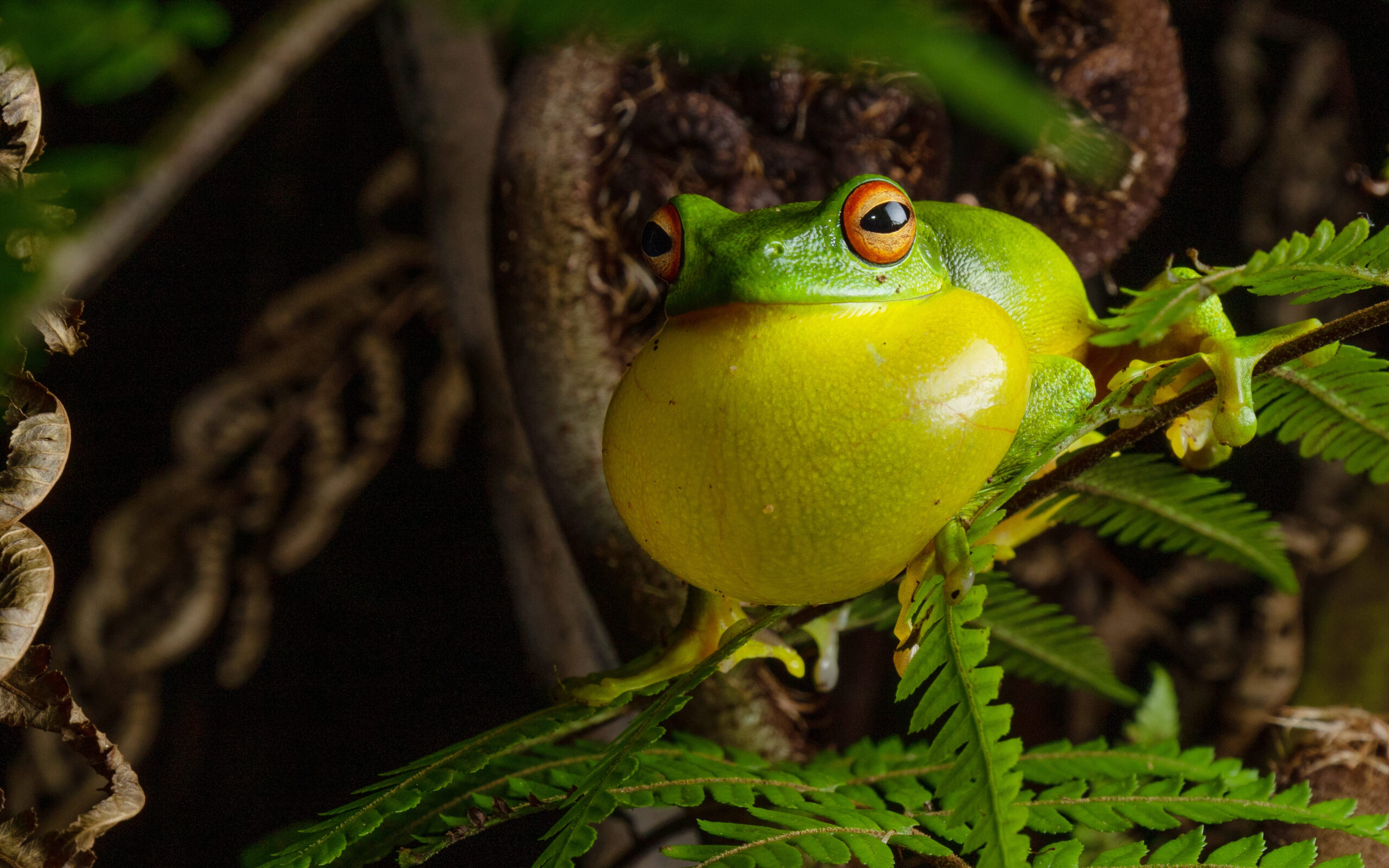
Breeding happens after heavy rain during summer and spring time, and this is when the male frog really warms up its vocal cords and sings to a potential mate, using a series of long “aaaa-rks” ending with a chirp. Mating takes place in shallow pools of water, with the female frog known to lay up to five clutches of up to 500 eggs per breeding season. Light brown tadpoles tend to stay at the bottom of water bodies until they reach metamorphosis and develop into a frog after around 41 days.
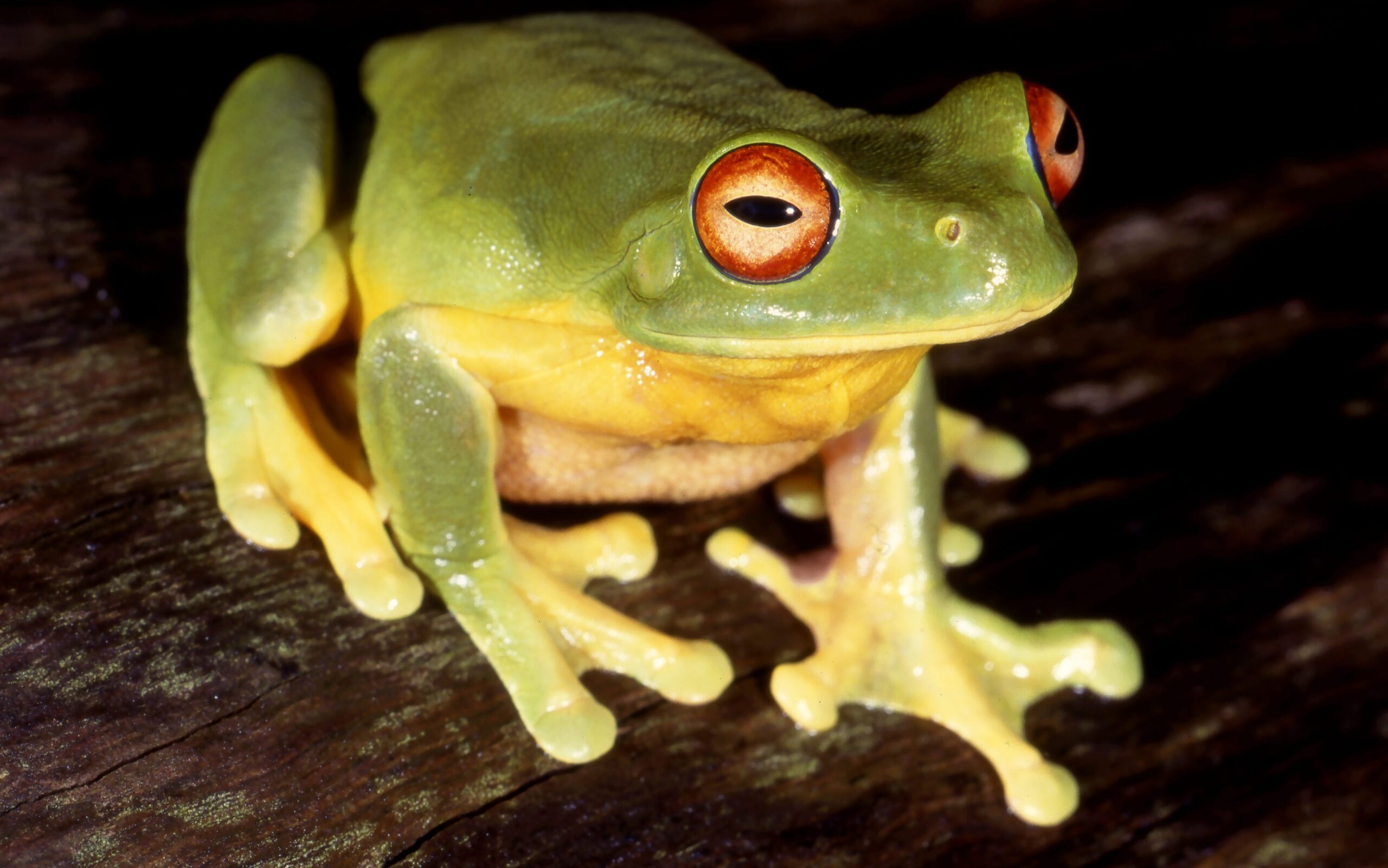
Surviving on a diet of small insects and moths, the skin glands of the red-eyed green tree frog contain a variety of peptides or small proteins called caerins. Of great interest to scientists and the medical research world, at least four of these caerins contain anti-bacterial properties and have been used in medical trails to combat infections, regulate heartrate function and even fight cancer.





